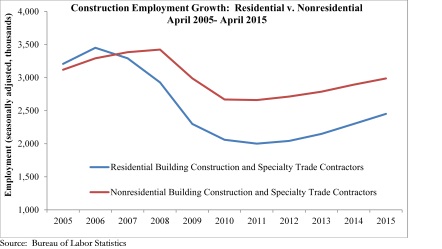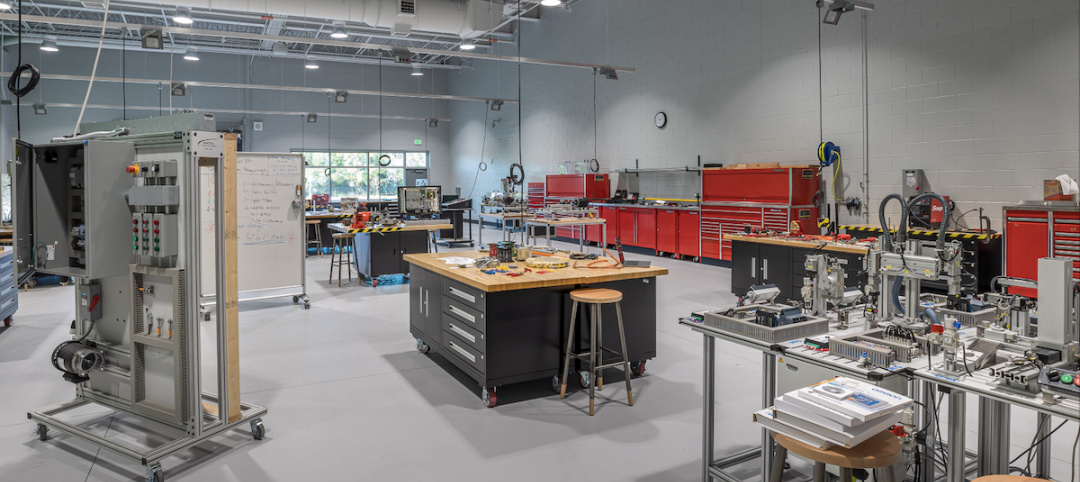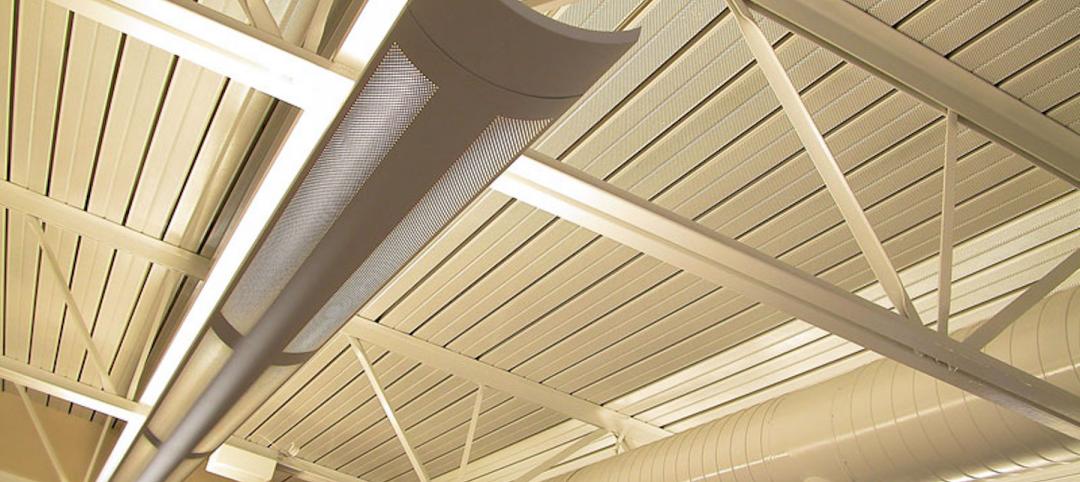A new report from the Bureau of Labor Statistics found that the U.S. construction industry added 45,000 jobs during the month of April. According to Associated Builders and Contractors, nonresidential construction employment rose by 12,400 jobs in April while nonresidential specialty trade contractors added 20,200 new jobs following a loss of 9,000 jobs in March.

The following is a breakdown of construction employment in April:
• Nonresidential building construction employment fell by 7,800 jobs for the month but is up by 16,600 jobs (2.4 percent) from the same time last year.
• The heavy and civil engineering construction segment added 8,400 jobs in April and employment is up by 33,100 positions (3.6 percent) year-over-year.
• Residential building construction employment expanded by 2,800 jobs in April and is up by 41,200 jobs (6.3 percent) on an annual basis.
• Residential specialty trade contractors added 20,800 net new jobs in April and has added 102,400 jobs (6.8 percent) since April 2014.
• Nonresidential specialty trade contractors added 20,200 jobs for the month and employment in that category is up by 76,400 jobs (3.5 percent) from the same time last year.
Mining and logging lost 15,000 net jobs in April after gaining jobs in every month during 2014. This sector lost more jobs during the first quarter of 2015 (-48,000) than it added in all of 2014.
“While the broader jobs report proved better than expected, April was the best month for construction employment since January 2014,” said Associated Builders and Contractors Chief Economist Anirban Basu. “Though it may have been expected to see solid job creation performance reflected in today’s report, it is still a relief to obtain a nice piece of data. Economic data regarding retail sales, industrial production, and other elements of economic life have largely been disappointing to date and the March jobs report fell in line with that series of uninspired results. Data regarding unemployment claims strongly suggested that employers viewed the recent bout of economic weakness as temporary. The lack of new lay-off activity indicates an ongoing demand for labor and April’s reasonably strong employment gains suggest that many employers continue to search for additional staffing."
Related Stories
Sponsored | BD+C University Course | Apr 1, 2022
Video surveillance systems for multifamily housing projects
This introductory course provides detailed technical information and advice from security expert Michael Silva, CPP, on designing a video surveillance system for multifamily housing communities – apartments, condominiums, townhouses, or senior living communities. Technical advice on choosing the right type of cameras and optimizing the exterior lighting for their use is offered.
K-12 Schools | Apr 1, 2022
Charleston County’s award-winning career and technical education high school
BD+C Executive Editor Rob Cassidy talks with the team behind the award-winning Cooper River Center for Advanced Studies, a Career|Technical Education high school in Charleston County, S.C.
Modular Building | Mar 31, 2022
Rick Murdock’s dream multifamily housing factory
Modular housing leader Rick Murdock had a vision: Why not use robotic systems to automate the production of affordable modular housing? Now that vision is a reality.
Contractors | Mar 28, 2022
Amid supply chain woes, building teams employ extreme procurement measures
Project teams are looking to eliminate much of the guesswork around product availability and price inflation by employing early bulk-purchasing measures for entire building projects.
Contractors | Mar 23, 2022
Hiring Construction Workers in a Frantic Post-Covid Job Market
McCarthy Building Companies' Director of Talent Acquisition, Ben Craigs, discusses the construction giant's recruitment and training strategies in a hyper-competitive market. Craigs sits down with BD+C Senior Editor John Caulfield.
Sponsored | BD+C University Course | Jan 30, 2022
Optimized steel deck design
This course provides an overview of structural steel deck design and the ways to improve building performance and to reduce total-project costs.
Urban Planning | Jan 25, 2022
Retooling innovation districts for medium-sized cities
This type of development isn’t just about innovation or lab space; and it’s not just universities or research institutions that are driving this change.
Sponsored | Resiliency | Jan 24, 2022
Norshield Products Fortify Critical NYC Infrastructure
New York City has two very large buildings dedicated to answering the 911 calls of its five boroughs. With more than 11 million emergency calls annually, it makes perfect sense. The second of these buildings, the Public Safety Answering Center II (PSAC II) is located on a nine-acre parcel of land in the Bronx. It’s an imposing 450,000 square-foot structure—a 240-foot-wide by 240-foot-tall cube. The gleaming aluminum cube risesthe equivalent of 24 stories from behind a grassy berm, projecting the unlikely impression that it might actually be floating. Like most visually striking structures, the building has drawn as much scorn as it has admiration.
Engineers | Jan 12, 2022
Private equity: An increasingly attractive alternative for AEC firm sellers
Private equity firms active in the AEC sector work quietly in the background to partner with management, hold for longer periods, and build a win-win for investors and the firm. At a minimum, AEC firms contemplating ownership transition should consider private equity as a viable option. Here is why.
Sponsored | BD+C University Course | Jan 12, 2022
Total steel project performance
This instructor-led video course discusses actual project scenarios where collaborative steel joist and deck design have reduced total-project costs. In an era when incomplete structural drawings are a growing concern for our industry, the course reveals hidden costs and risks that can be avoided.
















